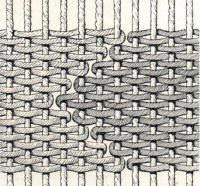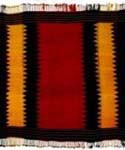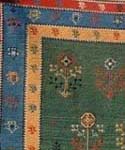
|
Kilim (flat woven)
There are environmental, sociological, economic,
and religious reasons for the widespread art of kilim weaving among the Turkish
people from Central Asia to Turkey.The geographical regions whereTurks have
lived throughout the centuries lie in the temperate zone.Temperature fluctuations
between day and night, summer and winter may vary greatly. Turks-nomadic or
pastoral, agrarian or town-dwellers, living in tents or in sumptuous houses
in large cities-have protected themselves from the extremes of the cold weather
by covering the floors, and sometimes walls and doorways, with carpets. The
kilims are always hand made of wool or sometimes cotton, these kilims are natural
barriers against the cold. The flat woven kilims which are frequently embroidered
are used as blankets, curtains, and covers over sofas or as cushion covers.
Kilims known as the flat-woven carpets, play an important
role in the lives of Anatolian people. They have been used as cradles for babies,
as the most beautiful part of the trousseau of a young girl, as floor coverings,
wall hangings and sometimes as a sack to store grain or clothes in. The roof
and the walls of the home of a nomad are made of kilims. Hundreds of colours,
dancing on a kilim, are the expression of nature, dream, hope and love. Once
you learn the alphabet of a kilim you can read it as if it is an antology of
folk tales. It is not necessary to talk about the designs of a kilim it is upto
your understanding of beauty and art. You can say anything you like about the
designs. Your own story will be the most original one. Here are the meanings
of the most common designs seen on kilims.
The innumarable variety of kilim designs make it almost impossible to become
aquainted with all the variations.
|

|
|

|
The word 'kilim' applies to carpets (rugs)
which are not knotted but woven without pile.The threads in a kilim are woven
across the warp, not from edge to edge, but only were pattern and colour make it
necessary.The threads forming the pattern are beaten so close that the warp -
threads are
invisible. | |
KILIM
A kilim is always a weft-faced weave. Independent wefts are woven
back and forth each in its own pettern area. |
CICIM
The cicim is woven on a balanced plain or
weft-faced weave with an additional design thread used in a semi-wrapping
sequence. |
ZILI
The zili is woven on a balanced plain or weft-faced
weave in which two, three or rerely five warps are floated in horizontal
sequences by an extra weft. |
SUMAK
The sumak weave results from a complete wrapping
of the warps in each shed by de- sign threads.
|
|

|

|

|

|
|
 |